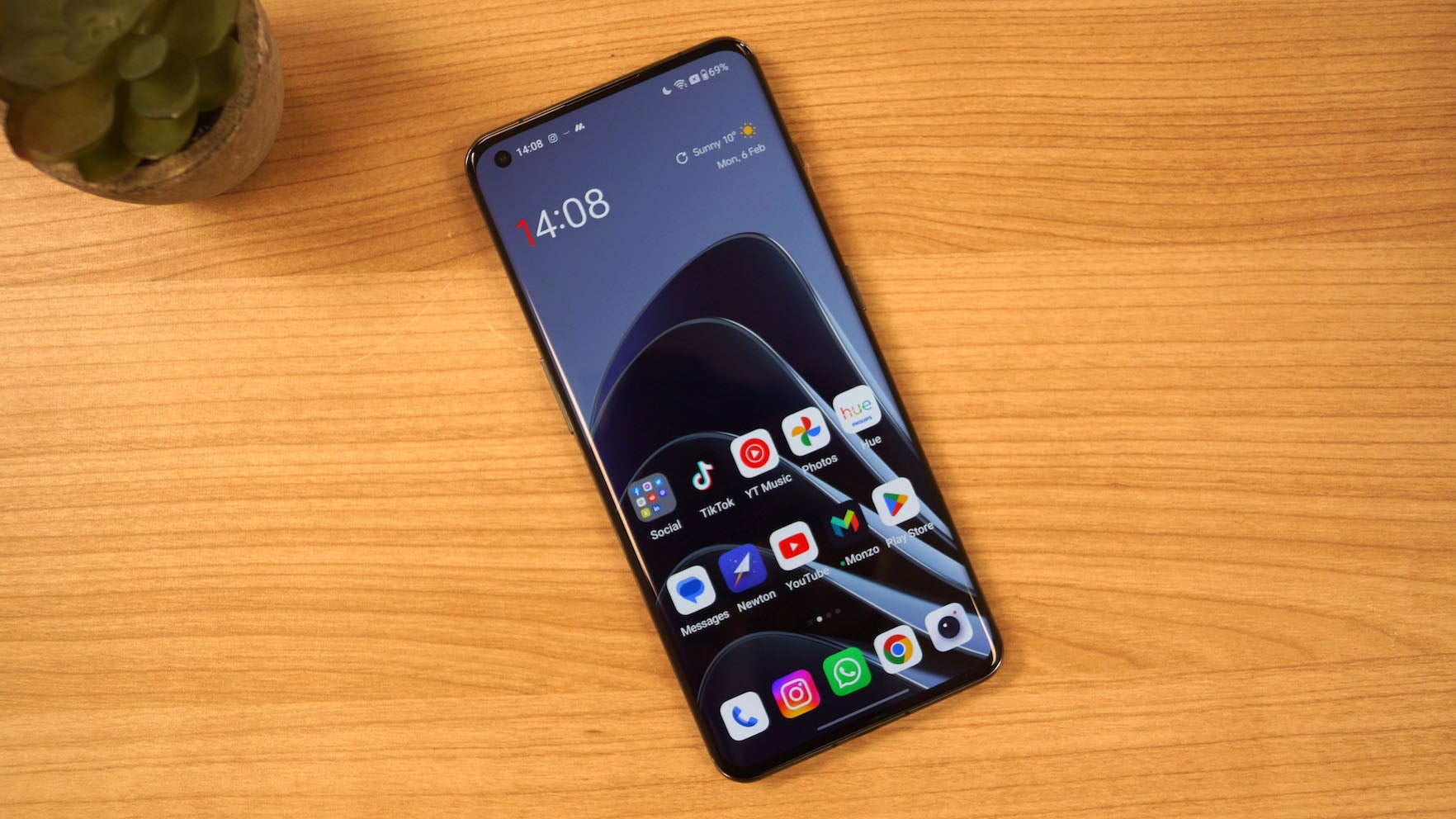Verdict
Another good partner for OnePlus’ smartphones, the Buds Pro 2 feature impressive ANC, very good call quality and good comfort levels, but they’re not the most exciting or dynamic true wireless to listen to.
Pros
- Impressive noise-cancelling
- Great fit and comfort
- Very call quality performance
- Warm, appealing audio
Cons
- Pedestrian sense of dynamism and excitement
- Best partnered with recent OnePlus smartphones
- No onboard volume control
Availability
- UKRRP: £179
- USARRP: $179
- EuropeRRP: €179
- CanadaRRP: CA$269
- Australiaunavailable
-
Bluetooth audioSupports SBC, AAC and LHDC codecs -
Noise-cancellationUp to 48dB of adaptive ANC -
Water resistanceIP55 rating protects against dust and water
Introduction
It’s become in vogue for smartphone brands to launch a pair of true wireless earbuds as an accessory to their latest phone launch. After all, with the success Apple has, you’d be a fool to let another brand be the headphone used with your smartphones.
Samsung does it, Oppo does it, Nothing does it and so do OnePlus, who after several attempts, finally struck oil with the original OnePlus Buds Pro, which we felt were easily the best buds OnePlus had produced.
With a new phone in the OnePlus 11, they’re back again with the Buds Pro 2, bursting with synergies and hoping to make the same argument Apple has convincingly made by making sure you buy the Buds Pro 2 along with your new smartphone.
Design
- Small and lightweight
- Great, comfortable fit
- Force sensor can be a little too sensitive
The design of the OnePlus Buds Pro 2 doesn’t appear to have shifted from the original, which is a good thing given our reviewer of that pair rated the comfort levels highly.
It’d be easy to cast these as AirPods Pro knock-offs, and while they take a similar shape, the look and style does differ. They take on a svelte appearance, and the protruding stem features an appealing and high-quality finish. These buds look well-formed and certainly not cheap.
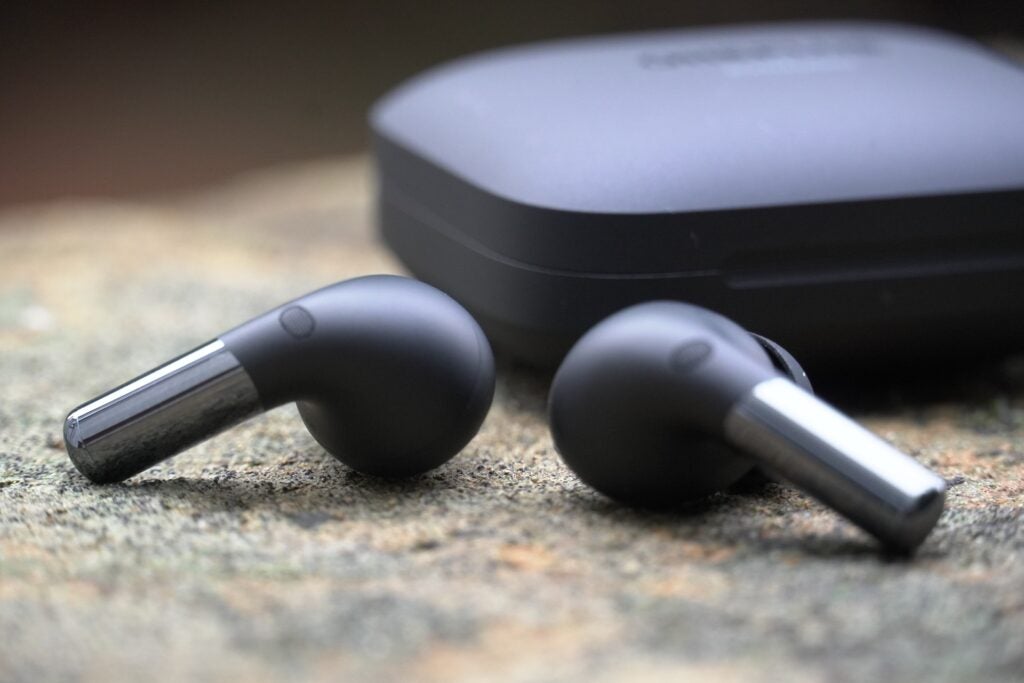
They’re some of the lightest buds on the market (4.9g), the small form makes for a snug fit in my ears, at least once the ear-tips have been swapped out for a bigger size as the default option led to a loose fit (three sizes of antibacterial ear-tips are provided).
Once pushed in, the seal is well-formed, and the noise-isolating properties of the design already acting to dispel some of the environmental noise. There’s no discomfort, no sense that they’d fall out either. With an IP55 rating, matching the likes of Jabra’s Elite 5, they can adequately cover low levels of dust and splashes of water.
They make use of force sensors on the stem, which I’ll admit, I’m not a big fan of – they can be fiddly to use and unresponsive at the worst of times. The controls are responsive, accessible in terms of their simplicity and with my rather large digits, grasping for the stem doesn’t unduly upset the fit or seal.

It’s not all good news though. There’s no onboard volume control, not even the option to map them to an action in the settings, and either the in-ear detection is too sensitive or the sensor brushing on my skin causes the buds to pause music and activate its transparency mode. Amusingly, I managed to do this just by yawning.
The case is as well-made as the buds – petite and pocketable, with a nice matte finish that speaks to the overall sense of quality. The case is rated to IPX4 for further protection when it gets wet, with an LED indicator on its front to judge battery life and a Bluetooth pairing button inside. It, like the buds, comes in two finishes: Obsidian Black and Arbor Green, the latter appears to be exclusive Amazon in the UK.
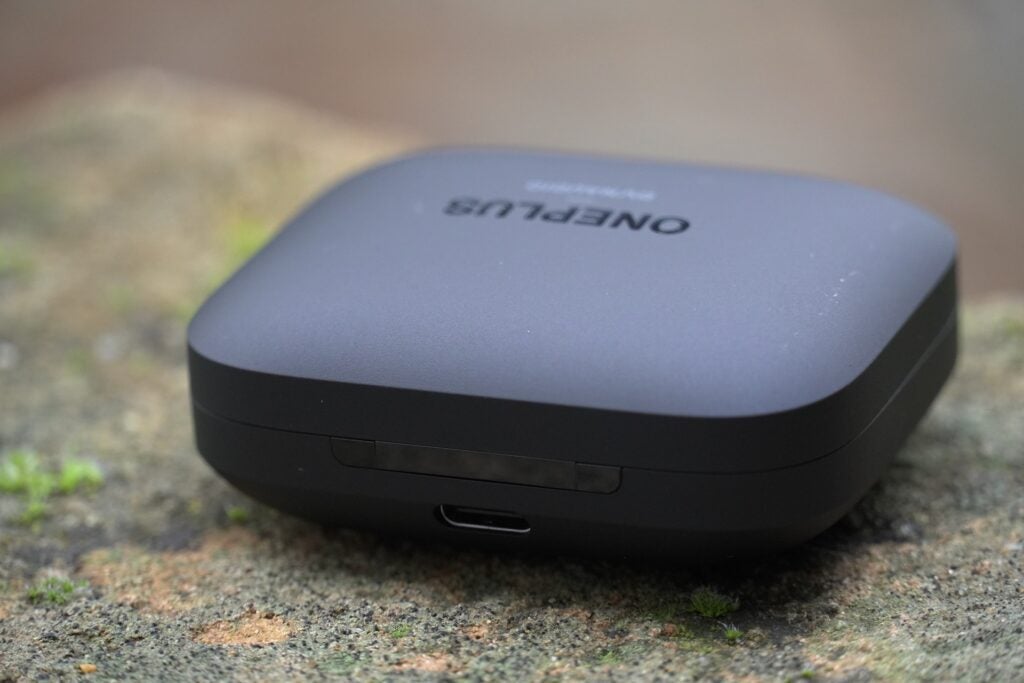
Features
- Long battery life
- Impressive noise-cancelling
- Very good call quality
There’s plenty to rifle through on the features front so let’s start with the OnePlus’ Bluetooth performance. The connective tissue between it and a phone is the latest spec in Bluetooth 5.3, with support for SBC, AAC and LHDC codecs. The latter is more widespread in Asia and not as common in the west where Sony’s LDAC has broader support.
The version here is LHDC 4.0 which covers hi-res (but lossy) transmission of audio over Bluetooth. OnePlus also claims a seamless Bluetooth connection between the buds and a compatible phone, with the OnePlus Buds Pro 2 set to be upgraded to version 5.0 via an update.
If you don’t have a phone that supports LHDC, then AAC is the codec you’ll be listening to music in. Connection-wise the Buds 2 Pro are absolutely fine in areas other than busy signal settings, and in those environments, it stumbles and splutters along when connected to my (ageing) OnePlus 7T until it finds some respite.
For Android phones, there’s Google Fast Pair to immediately connect to the earphones without searching for them in the Bluetooth settings, and Bluetooth multipoint is supported if you want to two devices at the same time.
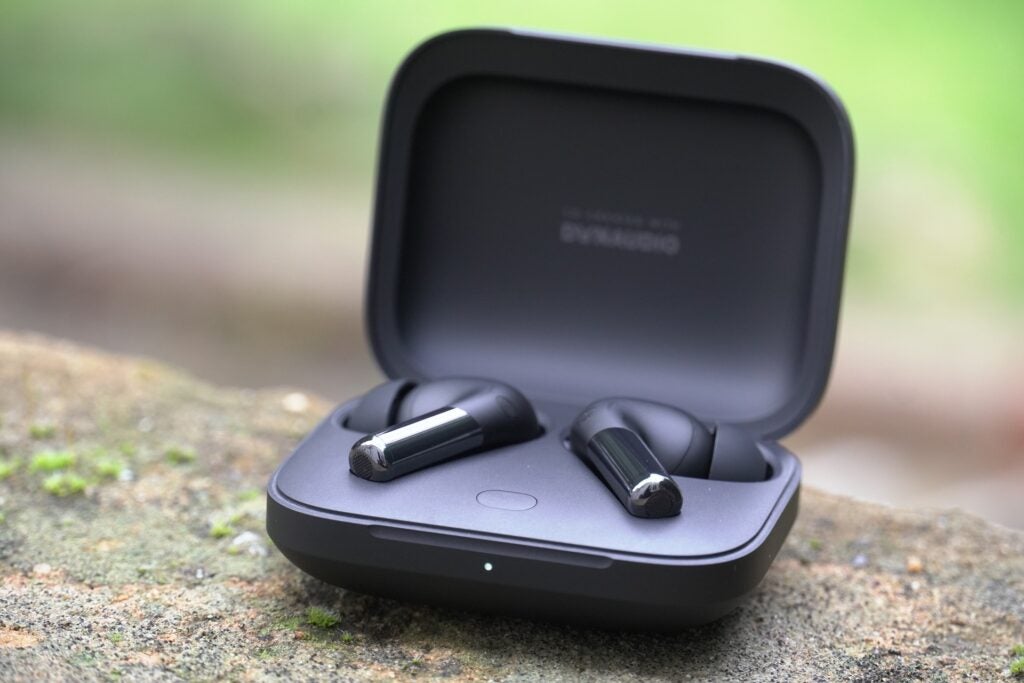
Call quality is very impressive, suppressing vehicles as they pass, the person on the other end of the call remarked that my voice was always audible, though perhaps slightly lower when the buds had to deal with loud noises, although not to the point where people walking past became a distraction. This is a very confident call quality performance from the Buds Pro 2.
Battery life is stated at 25 hours (including the charging case) with ANC, and 39 hours without it. OnePlus seems reluctant to mention how much charge is available per bud with ANC on (it’s nine hours without), but multiple attempts at playing an hour of Spotify drew a 10% drain, so it would appear these earbuds can last a while before another charge is needed.
Fast charging gives three more hours from a 10-minute charge, while the case supports wireless charging if you want to go down the (much) slower route of charging these buds.
There’s no app as such if you’re an Android user as the settings are stacked into the firmament of the Android OS in the Bluetooth settings section (iOS users and those with Android up to 7.0 will need to make do with the Hey Melody app). Head there and there’s a flurry of features including EQ options, which is Balanced by default but has other options as well as a five-band EQ to make your own profile. Hans Zimmer has teamed up with OnePlus to create his own EQ, due via an update in February 2023.
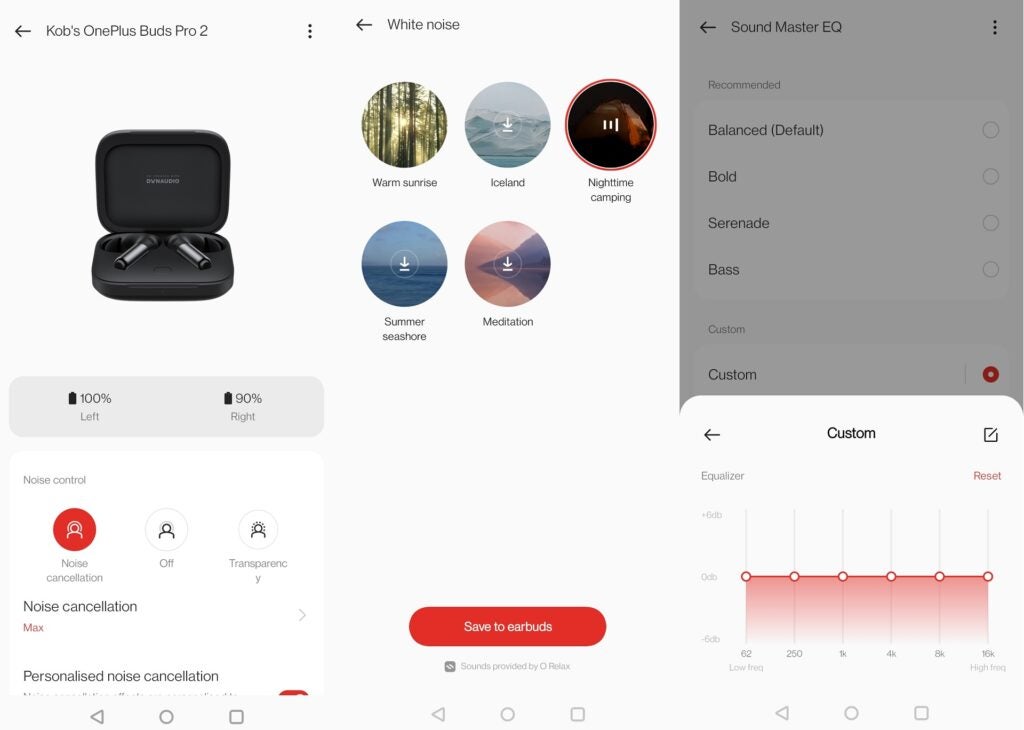
Golden sound claims to offer studio-quality audio tuned to your “ear canal structure and hearing characteristics”. Zen Mode Air is triggered by holding the stem for three seconds, playing white noise, but to call it ‘noise’ would be unkind. The option includes “Warm sunrise”, “Iceland” and “Nighttime camping” to play some soothing, relaxing, natural sounds.
Other features include an Earbud Fit Test (to be carried out in noisier settings for best effect) and Find my earbuds which plays a sound to help locate them.
Onto noise-cancellation, and it impresses. Commutes to and from work are mostly conducted in silence, the OnePlus Buds Pro 2 are good at adequality muffling out other people’s voices on a train. Persistent sounds are dealt with though not always removed; journeys on the tube are fairly well-handed though at default listening levels the roar of the Jubilee line can (just) get the better of them. In general, they keep out much more than they let in for very effective performance.
There’s Smart ANC that automatically tapers the noise cancellation based on what it senses (jumping up to min or max levels on a dime), and there’s Personalised ANC that matches the performance to your ear canal but I can never tell much of a difference with these ‘personalised’ modes.
The transparency is good, filtering through sounds clearly if not at forensic levels of detail. It’s good for spatial awareness and when turned on doesn’t lead to an overwhelming sense of noise flooding in, which some may appreciate.
Sound Quality
- Warm presentation
- Smooth midrange performance
- Laidback approach lacks a degree of excitement
What I’m rather excited about with the OnePlus Buds Pro 2 is the partnership with Danish masters Dynaudio on the sound front. Oppo used its expertise for the Enco true wireless series, which worked well.
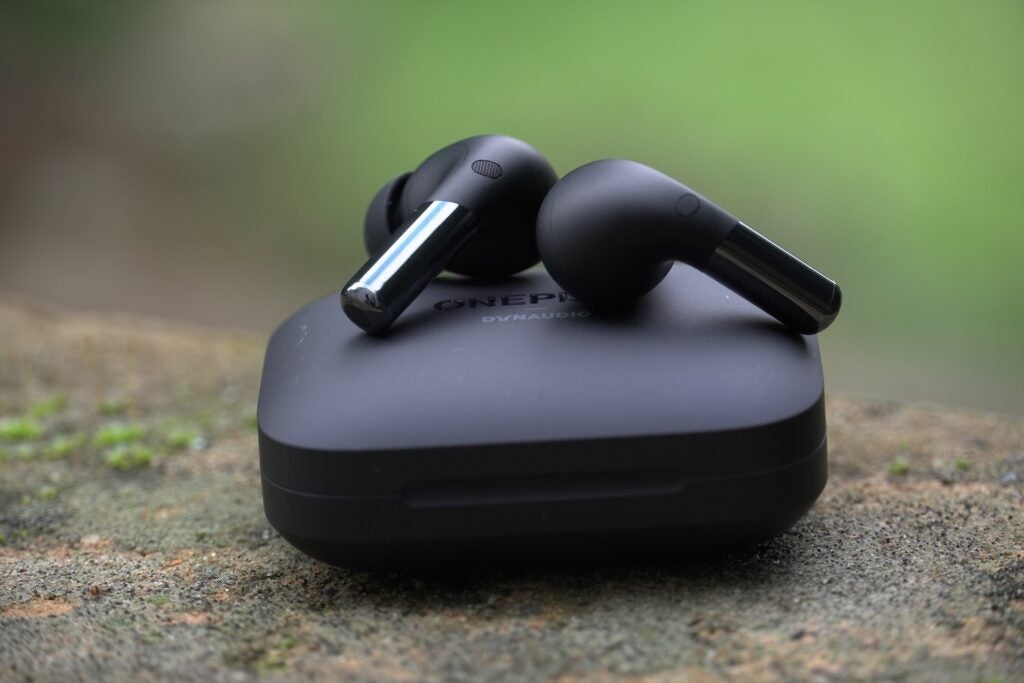
OnePlus and Dynaudio make boasts of audiophile sound, but I would not agree with those claims. What you get here is a solid performance, rich and warm but not overly so, with a smooth approach to the midrange all contained within a spacious soundstage.
Perhaps the audiophile presentation is possible with smartphones that support LHDC’s bigger bandwidth for higher quality sound, but considering it’s not as widespread that’s less an advantage and more a disadvantage, especially if you’ve got an older OnePlus or Android phone.
The warmth of the presentation leads to the top-end of the frequency range coming across as rolled off – it’s clear and bright enough to be distinct from the midrange in GoGo Penguin’s Atomised but lacks that brilliance and sharpness to really sparkle. The warmth renders vocals smooth, while bass levels are good if not featuring the most depth and extension – if anything the OnePlus take a rather tasteful approach to the low frequencies.
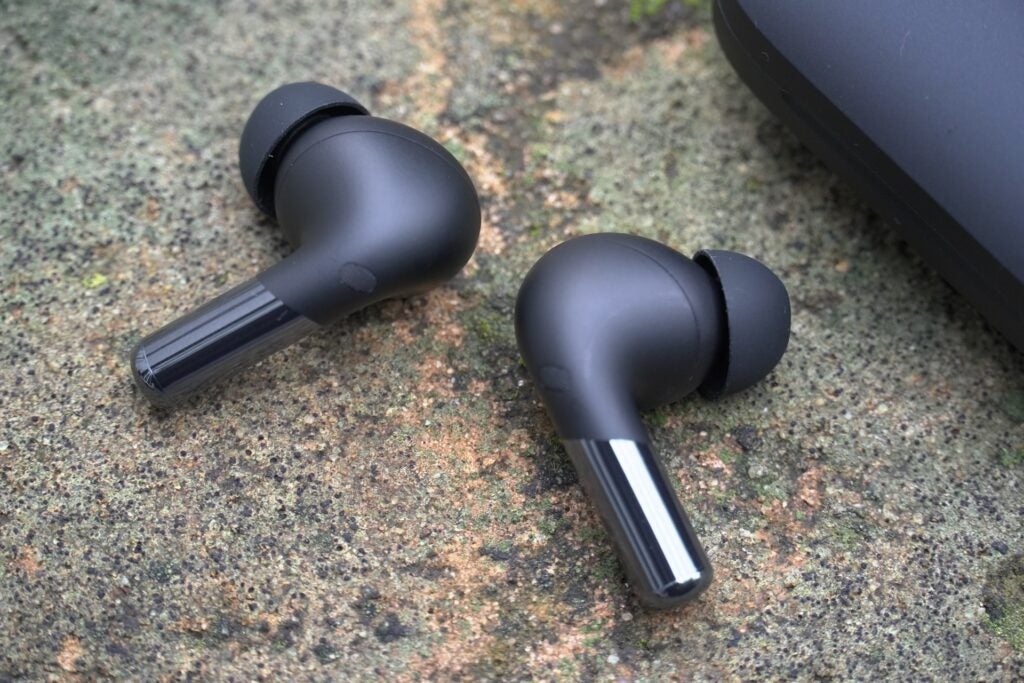
Mainly it’s the lack of dynamism that stops these earbuds from approaching the class-leaders around this price. Van Halen’s Jump (Tidal Master) is not the most excitingly rendered, ups and downs rather pitched in the middle which makes the OnePlus rather one-note in terms of shifts in momentum, while vocals lack a degree of dynamism that would make them more lifelike.
Neither Marlena Shaw’s voice in California Soul or Norah Jones in I Don’t Know Why really reach out and grab the listener by the scruff of the neck, the Buds Pro 2 just lack that sense of zest and excitement to its sound.
Latest deals
Should you buy it?
If you have a recent OnePlus phone: You’ll want to partner this true wireless pair with a phone that supports LHDC to improve its audio and wireless connectivity prospects.
You want best-in-class performance: With Bose and Sony earphones dropping in price to hit the same level as the OnePlus, you’re well stocked for other true wireless earphones.
Final Thoughts
OnePlus, with the help of Dynaudio, has produced another fine sonic partner for its smartphones, featuring very impressive noise cancellation, very good call quality and a sound that’s warm and rich. Its stylish looks and lightweight, comfortable fit are other plusses for prospective buyers to consider.
But are these earphones necessarily the best partner for your (Android) smartphone? I wouldn’t say so unless you’ve invested in a brand-new OnePlus or Oppo. With the Sony WF-1000XM4 and Bose QuietComfort Earbuds still available around the same price as the OnePlus, you’ve got some formidable competition at the midrange tier for true wireless earphones.
How we test
We test every set of headphones we review thoroughly over an extended period of time. We use industry standard tests to compare features properly. We’ll always tell you what we find. We never, ever, accept money to review a product.
Find out more about how we test in our ethics policy.
Tested with real world use
FAQs
LHDC is a hi-res capable audio codec that allows for more data to be passed through over a Bluetooth wireless connection to listen to higher quality music.
Sustainability
Trusted Reviews’ holds the fact that global warming is not a myth as a core value and will continuously endeavour to help protect our planet from harm in its business practices.
As part of this mission, whenever we review a product we send the company a series of questions to help us gauge and make transparent the impact the device has on the environment.
We currently haven’t received answers to the questions on this product, but will update this page the moment we do. You can see a detailed breakdown of the questions we ask and why in our sustainability info page.
Jargon buster
Bluetooth multipoint
Bluetooth multipoint is a device’s ability to connect to two or more devices simultaneously over a Bluetooth connection
ANC
ANC (Active Noise Cancellation) uses an array of microphones in a headphone to detect the frequency of the sound coming at the listener, with the ANC chip creating an inverse wave (i.e. opposing sound) to suppress any unwanted external noises.
Verdict
Another good partner for OnePlus’ smartphones, the Buds Pro 2 feature impressive ANC, very good call quality and good comfort levels, but they’re not the most exciting or dynamic true wireless to listen to.
Pros
- Impressive noise-cancelling
- Great fit and comfort
- Very call quality performance
- Warm, appealing audio
Cons
- Pedestrian sense of dynamism and excitement
- Best partnered with recent OnePlus smartphones
- No onboard volume control
Availability
- UKRRP: £179
- USARRP: $179
- EuropeRRP: €179
- CanadaRRP: CA$269
- Australiaunavailable
-
Bluetooth audioSupports SBC, AAC and LHDC codecs -
Noise-cancellationUp to 48dB of adaptive ANC -
Water resistanceIP55 rating protects against dust and water
Introduction
It’s become in vogue for smartphone brands to launch a pair of true wireless earbuds as an accessory to their latest phone launch. After all, with the success Apple has, you’d be a fool to let another brand be the headphone used with your smartphones.
Samsung does it, Oppo does it, Nothing does it and so do OnePlus, who after several attempts, finally struck oil with the original OnePlus Buds Pro, which we felt were easily the best buds OnePlus had produced.
With a new phone in the OnePlus 11, they’re back again with the Buds Pro 2, bursting with synergies and hoping to make the same argument Apple has convincingly made by making sure you buy the Buds Pro 2 along with your new smartphone.
Design
- Small and lightweight
- Great, comfortable fit
- Force sensor can be a little too sensitive
The design of the OnePlus Buds Pro 2 doesn’t appear to have shifted from the original, which is a good thing given our reviewer of that pair rated the comfort levels highly.
It’d be easy to cast these as AirPods Pro knock-offs, and while they take a similar shape, the look and style does differ. They take on a svelte appearance, and the protruding stem features an appealing and high-quality finish. These buds look well-formed and certainly not cheap.

They’re some of the lightest buds on the market (4.9g), the small form makes for a snug fit in my ears, at least once the ear-tips have been swapped out for a bigger size as the default option led to a loose fit (three sizes of antibacterial ear-tips are provided).
Once pushed in, the seal is well-formed, and the noise-isolating properties of the design already acting to dispel some of the environmental noise. There’s no discomfort, no sense that they’d fall out either. With an IP55 rating, matching the likes of Jabra’s Elite 5, they can adequately cover low levels of dust and splashes of water.
They make use of force sensors on the stem, which I’ll admit, I’m not a big fan of – they can be fiddly to use and unresponsive at the worst of times. The controls are responsive, accessible in terms of their simplicity and with my rather large digits, grasping for the stem doesn’t unduly upset the fit or seal.

It’s not all good news though. There’s no onboard volume control, not even the option to map them to an action in the settings, and either the in-ear detection is too sensitive or the sensor brushing on my skin causes the buds to pause music and activate its transparency mode. Amusingly, I managed to do this just by yawning.
The case is as well-made as the buds – petite and pocketable, with a nice matte finish that speaks to the overall sense of quality. The case is rated to IPX4 for further protection when it gets wet, with an LED indicator on its front to judge battery life and a Bluetooth pairing button inside. It, like the buds, comes in two finishes: Obsidian Black and Arbor Green, the latter appears to be exclusive Amazon in the UK.

Features
- Long battery life
- Impressive noise-cancelling
- Very good call quality
There’s plenty to rifle through on the features front so let’s start with the OnePlus’ Bluetooth performance. The connective tissue between it and a phone is the latest spec in Bluetooth 5.3, with support for SBC, AAC and LHDC codecs. The latter is more widespread in Asia and not as common in the west where Sony’s LDAC has broader support.
The version here is LHDC 4.0 which covers hi-res (but lossy) transmission of audio over Bluetooth. OnePlus also claims a seamless Bluetooth connection between the buds and a compatible phone, with the OnePlus Buds Pro 2 set to be upgraded to version 5.0 via an update.
If you don’t have a phone that supports LHDC, then AAC is the codec you’ll be listening to music in. Connection-wise the Buds 2 Pro are absolutely fine in areas other than busy signal settings, and in those environments, it stumbles and splutters along when connected to my (ageing) OnePlus 7T until it finds some respite.
For Android phones, there’s Google Fast Pair to immediately connect to the earphones without searching for them in the Bluetooth settings, and Bluetooth multipoint is supported if you want to two devices at the same time.

Call quality is very impressive, suppressing vehicles as they pass, the person on the other end of the call remarked that my voice was always audible, though perhaps slightly lower when the buds had to deal with loud noises, although not to the point where people walking past became a distraction. This is a very confident call quality performance from the Buds Pro 2.
Battery life is stated at 25 hours (including the charging case) with ANC, and 39 hours without it. OnePlus seems reluctant to mention how much charge is available per bud with ANC on (it’s nine hours without), but multiple attempts at playing an hour of Spotify drew a 10% drain, so it would appear these earbuds can last a while before another charge is needed.
Fast charging gives three more hours from a 10-minute charge, while the case supports wireless charging if you want to go down the (much) slower route of charging these buds.
There’s no app as such if you’re an Android user as the settings are stacked into the firmament of the Android OS in the Bluetooth settings section (iOS users and those with Android up to 7.0 will need to make do with the Hey Melody app). Head there and there’s a flurry of features including EQ options, which is Balanced by default but has other options as well as a five-band EQ to make your own profile. Hans Zimmer has teamed up with OnePlus to create his own EQ, due via an update in February 2023.

Golden sound claims to offer studio-quality audio tuned to your “ear canal structure and hearing characteristics”. Zen Mode Air is triggered by holding the stem for three seconds, playing white noise, but to call it ‘noise’ would be unkind. The option includes “Warm sunrise”, “Iceland” and “Nighttime camping” to play some soothing, relaxing, natural sounds.
Other features include an Earbud Fit Test (to be carried out in noisier settings for best effect) and Find my earbuds which plays a sound to help locate them.
Onto noise-cancellation, and it impresses. Commutes to and from work are mostly conducted in silence, the OnePlus Buds Pro 2 are good at adequality muffling out other people’s voices on a train. Persistent sounds are dealt with though not always removed; journeys on the tube are fairly well-handed though at default listening levels the roar of the Jubilee line can (just) get the better of them. In general, they keep out much more than they let in for very effective performance.
There’s Smart ANC that automatically tapers the noise cancellation based on what it senses (jumping up to min or max levels on a dime), and there’s Personalised ANC that matches the performance to your ear canal but I can never tell much of a difference with these ‘personalised’ modes.
The transparency is good, filtering through sounds clearly if not at forensic levels of detail. It’s good for spatial awareness and when turned on doesn’t lead to an overwhelming sense of noise flooding in, which some may appreciate.
Sound Quality
- Warm presentation
- Smooth midrange performance
- Laidback approach lacks a degree of excitement
What I’m rather excited about with the OnePlus Buds Pro 2 is the partnership with Danish masters Dynaudio on the sound front. Oppo used its expertise for the Enco true wireless series, which worked well.

OnePlus and Dynaudio make boasts of audiophile sound, but I would not agree with those claims. What you get here is a solid performance, rich and warm but not overly so, with a smooth approach to the midrange all contained within a spacious soundstage.
Perhaps the audiophile presentation is possible with smartphones that support LHDC’s bigger bandwidth for higher quality sound, but considering it’s not as widespread that’s less an advantage and more a disadvantage, especially if you’ve got an older OnePlus or Android phone.
The warmth of the presentation leads to the top-end of the frequency range coming across as rolled off – it’s clear and bright enough to be distinct from the midrange in GoGo Penguin’s Atomised but lacks that brilliance and sharpness to really sparkle. The warmth renders vocals smooth, while bass levels are good if not featuring the most depth and extension – if anything the OnePlus take a rather tasteful approach to the low frequencies.

Mainly it’s the lack of dynamism that stops these earbuds from approaching the class-leaders around this price. Van Halen’s Jump (Tidal Master) is not the most excitingly rendered, ups and downs rather pitched in the middle which makes the OnePlus rather one-note in terms of shifts in momentum, while vocals lack a degree of dynamism that would make them more lifelike.
Neither Marlena Shaw’s voice in California Soul or Norah Jones in I Don’t Know Why really reach out and grab the listener by the scruff of the neck, the Buds Pro 2 just lack that sense of zest and excitement to its sound.
Latest deals
Should you buy it?
If you have a recent OnePlus phone: You’ll want to partner this true wireless pair with a phone that supports LHDC to improve its audio and wireless connectivity prospects.
You want best-in-class performance: With Bose and Sony earphones dropping in price to hit the same level as the OnePlus, you’re well stocked for other true wireless earphones.
Final Thoughts
OnePlus, with the help of Dynaudio, has produced another fine sonic partner for its smartphones, featuring very impressive noise cancellation, very good call quality and a sound that’s warm and rich. Its stylish looks and lightweight, comfortable fit are other plusses for prospective buyers to consider.
But are these earphones necessarily the best partner for your (Android) smartphone? I wouldn’t say so unless you’ve invested in a brand-new OnePlus or Oppo. With the Sony WF-1000XM4 and Bose QuietComfort Earbuds still available around the same price as the OnePlus, you’ve got some formidable competition at the midrange tier for true wireless earphones.
How we test
We test every set of headphones we review thoroughly over an extended period of time. We use industry standard tests to compare features properly. We’ll always tell you what we find. We never, ever, accept money to review a product.
Find out more about how we test in our ethics policy.
Tested with real world use
FAQs
LHDC is a hi-res capable audio codec that allows for more data to be passed through over a Bluetooth wireless connection to listen to higher quality music.
Sustainability
Trusted Reviews’ holds the fact that global warming is not a myth as a core value and will continuously endeavour to help protect our planet from harm in its business practices.
As part of this mission, whenever we review a product we send the company a series of questions to help us gauge and make transparent the impact the device has on the environment.
We currently haven’t received answers to the questions on this product, but will update this page the moment we do. You can see a detailed breakdown of the questions we ask and why in our sustainability info page.
Jargon buster
Bluetooth multipoint
Bluetooth multipoint is a device’s ability to connect to two or more devices simultaneously over a Bluetooth connection
ANC
ANC (Active Noise Cancellation) uses an array of microphones in a headphone to detect the frequency of the sound coming at the listener, with the ANC chip creating an inverse wave (i.e. opposing sound) to suppress any unwanted external noises.


















